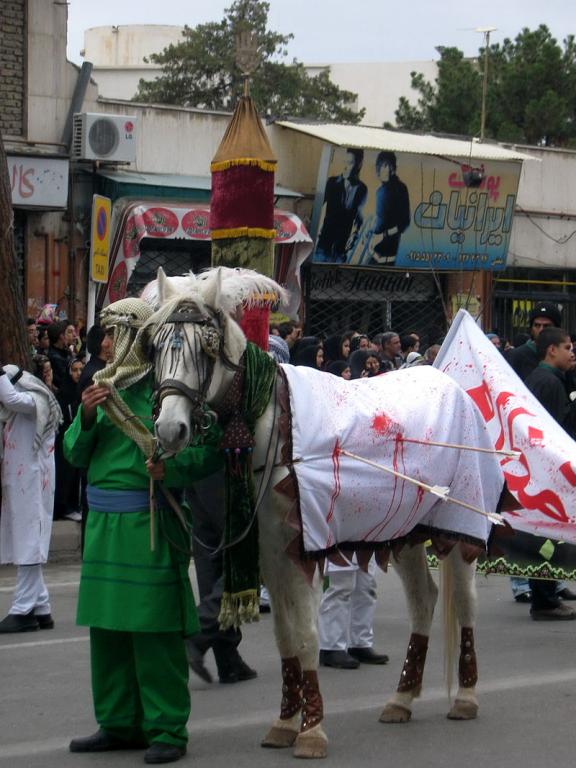
Continent: Asia
Country: Iran
Weight: 350 – 450 kg
Height: 145 – 155 cm
The Persian Arabian horse finds its roots in ancient Iran, once called Persia, where it was shaped by centuries of natural and human selection. Raised in desert and mountainous regions, it developed exceptional endurance, frugal feeding habits, and remarkable resilience.
Beyond its physical qualities, it embodies a cultural and historical symbol: companion of the Persian dynasties, a prestigious war and aristocratic mount, and a genetic source that has influenced many Eastern and Western breeds.
The Persian Arabian is traditionally bred in eastern and central Iran, where it established its identity. The country’s desert and semi-mountainous zones, especially near ancient Persia, shaped its hardiness and endurance.
While its cradle remains Iran, the Persian Arabian has been exported for centuries to the Ottoman Empire, the Mughal Empire in India, and later to Europe, contributing to the foundation of many Arabian lines now registered within WAHO.
The Persian Arabian horse represents one of the foundational cores of today’s Purebred Arabian. Its millennia-old selection in Iran preserved an authentic oriental lineage, combining elegance, endurance, and frugality.
Originating from arid and mountainous environments, it passes on qualities of hardiness, strong hooves, and longevity. These traits are invaluable for strengthening other riding and endurance breeds.
Persian Arabian blood has left a lasting mark on horse genetics:
Today, the Persian Arabian remains an essential vector of diversity within the Arabian horse group. Its conservation is crucial to maintain a distinct oriental heritage, complementing other lines such as the Egyptian, Syrian, or Polish Arabians.
The Persian Arabian horse traces back to the Persian Empire in Antiquity. Cavalrymen of the Achaemenids (6th–4th century BC) already used swift, resilient horses for warfare and long-distance communication. Ancient authors such as Herodotus praised Persian horses as exceptional mounts, linked with imperial prestige.
During the Sassanid era (3rd–7th century AD), horse breeding became both a military and symbolic priority. Persian nobles owned carefully selected lines known for elegance, resistance, and battle aptitude. Horses were also diplomatic gifts, offered to foreign rulers.
With the Arab conquest in the 7th century, Persian horses merged with Arabian Peninsula stock, contributing to the rise of the Purebred Arabian. Iranian horses nevertheless retained distinct traits, sought after by the Ottomans, the Mughals, and later Europeans.
From the 17th century, Persian horses were introduced into European stud farms, where they contributed to the creation of prestigious breeds:
In the 20th century, faced with the globalization of Arabian types, Iran preserved its Persian lines within a specific registry, officially recognized by WAHO in 1967. Today, the Persian Arabian embodies a cultural and genetic legacy, bridging ancient traditions with modern recognition.
The Persian Arabian horse is known for a lively yet balanced character. Highly intelligent, it has a strong learning ability and is sensitive to its rider’s cues.
Naturally energetic and alert, it reacts quickly, making it suitable for experienced riders who can channel its power and agility.
Accustomed for centuries to communal breeding and nomadic life, the Persian Arabian maintains a strong herd instinct and coexists harmoniously with other horses.
Its historic selection alongside Persian riders made it close to humans, both sensitive and respectful. However, its refinement and reactivity require a bond of trust built through patience and consistency.
“The Persian Arabian combines the grace of an oriental horse with the loyalty of a lifelong companion, inspiring admiration and respect since Antiquity.”
The Persian Arabian is recognized as a cultural symbol of Iran. Authorities and local associations emphasize its safeguarding, regarding it as a living witness of Persian history, comparable to heritage sites and traditions.
With its endurance, suppleness, and noble type, the Persian Arabian has growing potential in international equestrian disciplines, particularly:
More Persian Arabian horses are now being exported and integrated into WAHO registries worldwide. This development enhances genetic diversity and strengthens the image of an authentic oriental horse valued by foreign breeders.
Main threats include:
Shaped by centuries of survival in arid and harsh environments, the Persian Arabian has a robust constitution and strong resistance to common diseases. Its solid hooves are perfectly adapted to rocky and dry terrains.
As with all Purebred Arabians, it may present rare hereditary diseases, which must be screened:
Specific DNA tests are available to identify carriers and avoid at-risk breeding.
Originating from dry climates, it can be sensitive to humid or poorly ventilated environments, increasing the risk of chronic respiratory issues.
With proper management (balanced diet, regular veterinary follow-up, outdoor life), the Persian Arabian enjoys remarkable longevity, often remaining rideable well past 25 years.